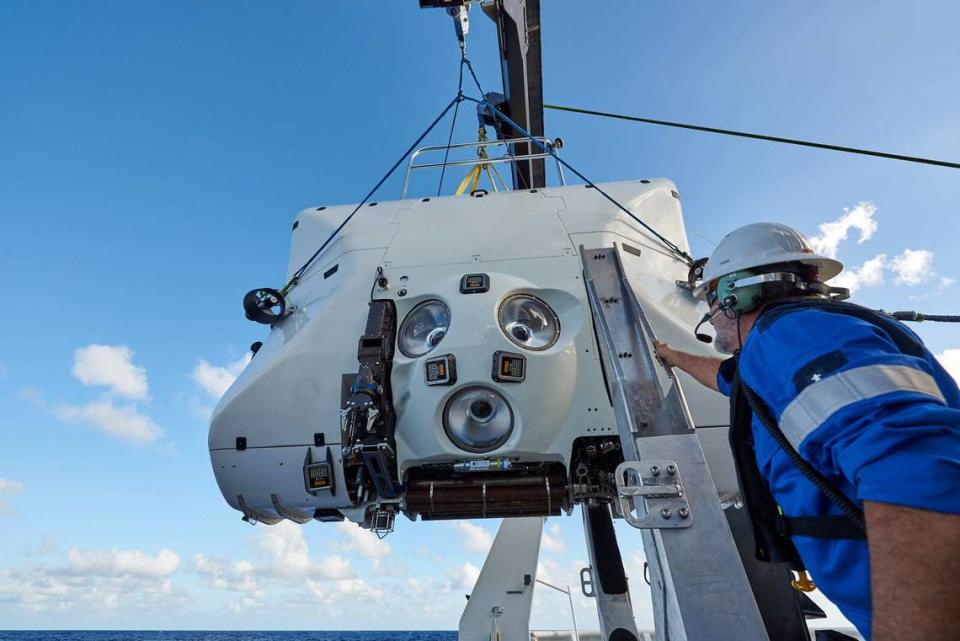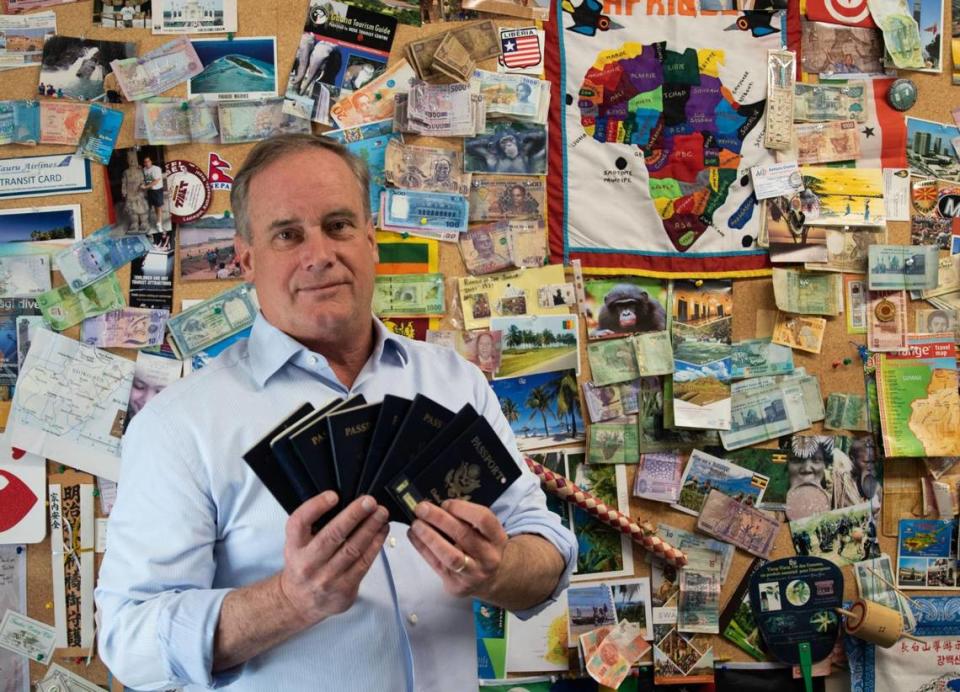After his recent trip to outer space, UNC professor is going to Earth’s deepest point
Three months ago, entrepreneur and UNC-Chapel Hill professor Jim Kitchen was gazing down at Earth from a rocketship in the blackness of outer space.
Next week, he’ll be exploring the darkness of the ocean floor in the Mariana Trench, the deepest known point on Earth.
Kitchen, 57, calls himself a “serial adventurer,” having also visited all 193 United Nations-recognized countries. This dive will make him the fifth person in history to travel to both inner and outer space.
“I think this is just my year to push these extreme boundaries,” Kitchen said, adding that going to space and riding a rocketship seems normal compared to this dive.
Kitchen has been an explorer his entire life, he said, but the goal of this trip isn’t just for a new adventure. The mission is propelling research on how life might survive in space, in part by observing the sea creatures that have adapted to extreme conditions.
“It’s so neat for a space buff,” he said.

‘100 elephants resting on your head’
The journey starts with a flight to Guam, where he’ll board the DSSV Pressure Drop and then cruise more than 200 miles to the Mariana Trench in the Pacific Ocean. After some training, he’ll sit in the 4-foot-wide cockpit of a titanium submarine that’s specially designed to travel to the trenches’ depths, about 7 miles or 35,800 feet.
Kitchen and his co-pilot, Victor Vescovo, who owns the expedition’s vessels, will descend into the darkness of the ocean for about four hours. They will then spend a few hours conducting scientific research in the “hadal zone,” then another four ascending to the water’s surface.
Vescovo is a retired Naval officer turned private equity investor who has traveled to space and explored the deepest parts of the ocean. Vescovo captured a Guinness World Record in 2019 as the first person to reach Earth’s highest and lowest points — atop Mount Everest and at the Challenger Deep in the Mariana Trench.

The hadal zone, which eerily sounds similar to the mythical king of the underworld Hades, is the area of the ocean below 20,000 feet. More people have been to the moon than have seen the ocean floor at these depths. The Challenger Deep is the deepest known part of the ocean.
A combination of titanium and foam allows the submersible vessel and its passengers to withstand the crushing pressures of the deep ocean at a temperature barely above freezing.
“The hydrostatic pressure down there is insane,” Kitchen said. “It’s the equivalent of an African bull elephant on every square inch of your body or 100 elephants resting on your head.”
Kitchen plans to bring a few Styrofoam heads like you would see at a wig shop as a personal experiment to show how the pressure forces the objects to shrink down about a quarter of its size.
He’s also bringing new stickers that say “this went to the very bottom of the earth,” the same sunflower seeds and picture of his family that he brought to space, Ukrainian and American flags, his handful of passports and a symbolic “195” flag, representing the 193 nations he’s visited, plus space and the Challenger Deep. He hopes to fly the flag “if and when I survive this thing,” Kitchen said.
Kitchen’s fear is the obvious one, but he’s confident in the structural integrity of the titanium submersible and the team that developed it. He said the vessel was built to withstand 50,000 dives to that level and the team has completed more than 1,200 successful missions. This mission is led and planned by Rob McCallum, founder of EYOS Expeditions.
Kitchen said his nerves are mostly driven by the anticipation that will come during the descent and the fact that he’ll have to sit for 14 hours, which is not his strength. And, unfortunately, there are no restrooms on board.
Scientific research from the ocean to space
Once Kitchen and Vescovo reach the ocean floor, they’ll collect scientific samples using a mechanical arm, survey different areas of the trenches and take footage of the sea life. Vescovo has gathered ocean sound and mapping data in partnership with the National Oceanic and Atmospheric Administration to find the bottom of the ocean and better understand it.
“I’m really looking forward to seeing some of these creatures that survive down there,” Kitchen said.

He described how they’ll use bait to attract ghost-like snailfish and aluminum-armored crustaceans.
Their work will help scientists understand how humans might survive in space by analyzing the creatures that have thrived in these really extreme environments, Kitchen said.
This could be the last private mission to the Challenger Deep since Vescovo is selling the ship and submersible vessel. Kitchen is paying to take part in this final mission, which he gained access to because his company underwrites some of the costs for that scientific team to function and for this ship to do their work, he said.
It was now or never, and after following EYOS Expeditions for years, Kitchen simply couldn’t pass up the opportunity.
“My life has for the last 30 years been about exploring the world and breaking through these boundaries,” Kitchen said. “To be able to go to space and then see this ... it really is amazing even to me.”
It is an adventure he does not take for granted and one he’s excited to share with his students in UNC’s Kenan-Flagler Business School. He plans to write about and teach the stories and the lessons of going to space, traveling the world and diving to the deepest part of the earth.
“It’s a very humbling experience,” Kitchen said. “I don’t look at it as a notch in my belt.”
It is his next challenge, he said, and another “opportunity to have my mind blown” and gain a new perspective.


 Yahoo Movies
Yahoo Movies 
